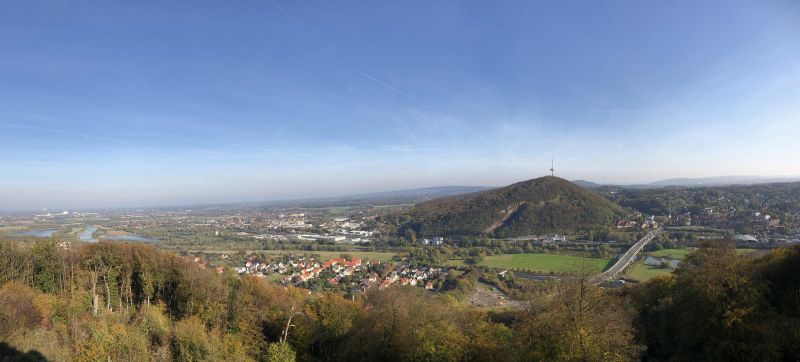Tales from the hills. The fate of Polish forced labourers at Porta Westfalica 1944/45
Mediathek Sorted






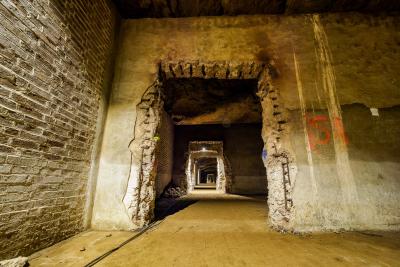
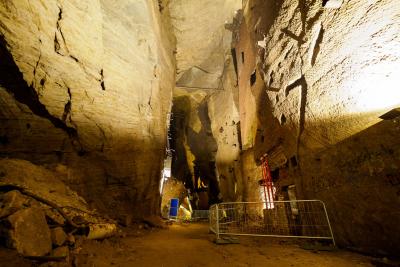

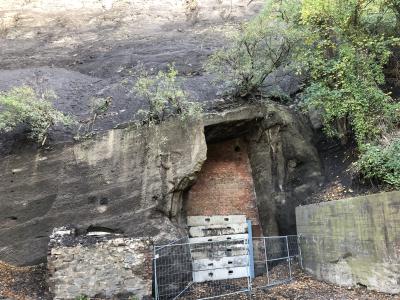

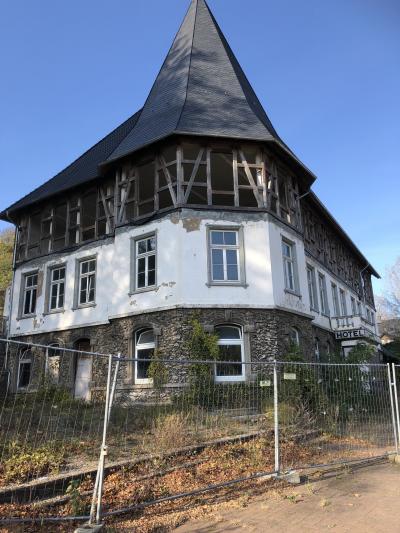

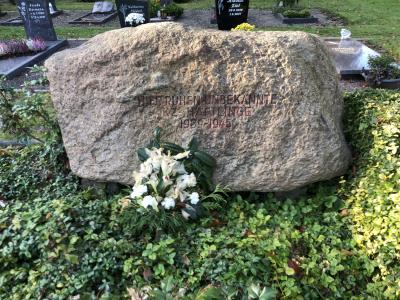

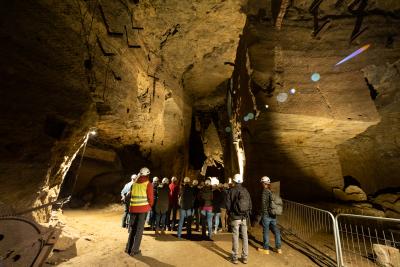

Introduction
The picturesque town of Porta Westfalica in the north-eastern region of North Rhine-Westphalia, with its unusual, Latinised name – a direct reference to the location of the town at the “gate to Westphalia” – is known locally simply as “Porta”. The enormous monument to Kaiser Wilhelm I towers over the town’s district of Barkhausen. The famous landmark in the region rises up from the Wittekindsberg hill and offers a breathtaking view onto the river Weser, which cuts through the idyllic Wiehen and Weser hills (Fig. 1 ). When I first visited the town in the autumn of 2019 and took in the view over other parts of Porta Westfalica from the large terrace that runs around the monument, it was difficult to imagine that here, in the middle of this beautiful landscape, several thousand people were forced to perform hard labour for the National Socialist regime. During the final years of the Second World War, Barkhausen, Hausberge and Neesen, which today belong to Porta Westfalica but which were at that time independent villages, were used as satellites for the Neuengamme concentration camp near Hamburg. Several of these satellites were constructed simultaneously in order to support a major armament production campaign involving a large number of big companies such as Philips from the Netherlands and the Deurag-Nerag oil refinery in Hanover. The forced labourers themselves were astonished at the location chosen for the production facilities. The former concentration camp inmate Wiesław Kielar remembers arriving at the Porta:
“We were disembarked from the train at the goods station of a small town with the strange name ‘Porta Westfalica[1]’. We were all the more surprised when we saw this quiet little town that ran along hillsides on both banks of the river with its typical holiday houses, without any trace of industrial activity. Where were the Philips factories where we were supposed to work?”[2]
The prisoners only found out that these factories, like many others used to support the National Socialist war economy, were to be located underground when they arrived on site. These “U-Verlagerungen” (underground relocations) were assigned codenames and were kept strictly secret. From 1943 onwards, the National Socialists moved these armament production sites, which were of great importance to the war effort, underground to protect them against Allied bombing raids. Although sandstone quarries had already been dug in the hills around the Porta in the past, they first had to be expanded before factories supporting the war effort and armament production could move in. This expansion involved a great deal of hard labour. The plan was extremely ambitious, and demanded one thing above all else: a workforce. Many of the foreign forced labourers brought to the Porta were forced to pay with their lives, although even today, the precise number of those who died is still not known.
Since the founding of the KZ-Gedenk- und Dokumentationsstätte Porta Westfalica e. V. in 2009, interest in keeping the memory of the forced labourers alive has increased in the region, and has meant that the darkest chapter of German history is not being forgotten.
What did the underground factories at Porta Westfalica look like? What source materials and personal memories have been passed down? What were the working and living conditions like for the concentration camp inmates who were forced to toil underground at the Porta? The aim of my historical research is to examine the traces of the National Socialist armament production and to find out more about the fate of the Polish forced labourers in Porta Westfalica.
[1] The town of Porta Westfalica was not created until 1973, as a result of the local government reorganisation in North Rhine-Westphalia. Here, the author probably refers to “Porta Westfalica” because the name was already in common use at that time to describe the region where the river Weser cuts through the surrounding hills.
[2] Kielar, Wiesław: Anus Mundi. Fünf Jahre Auschwitz, p. 369.





















































































